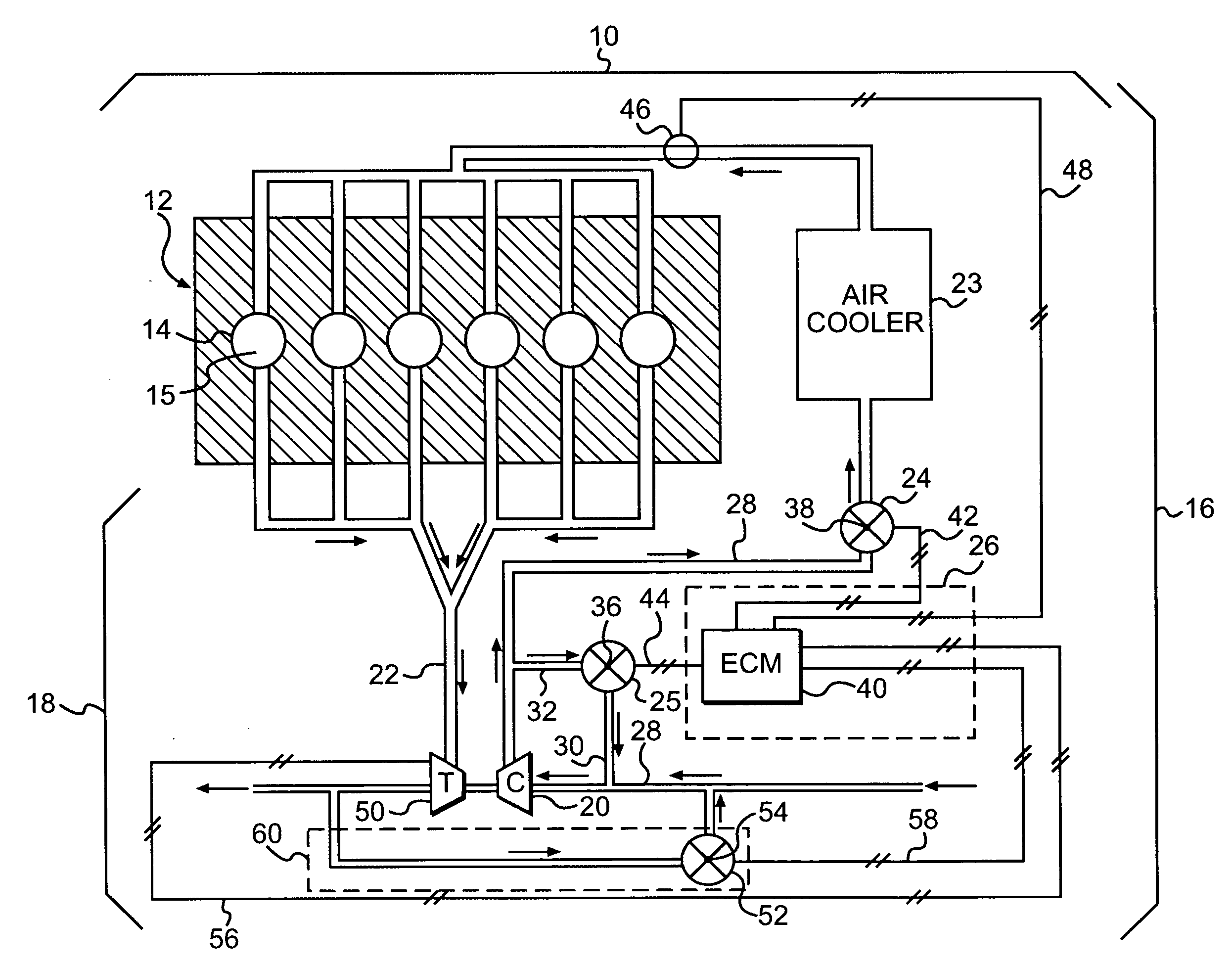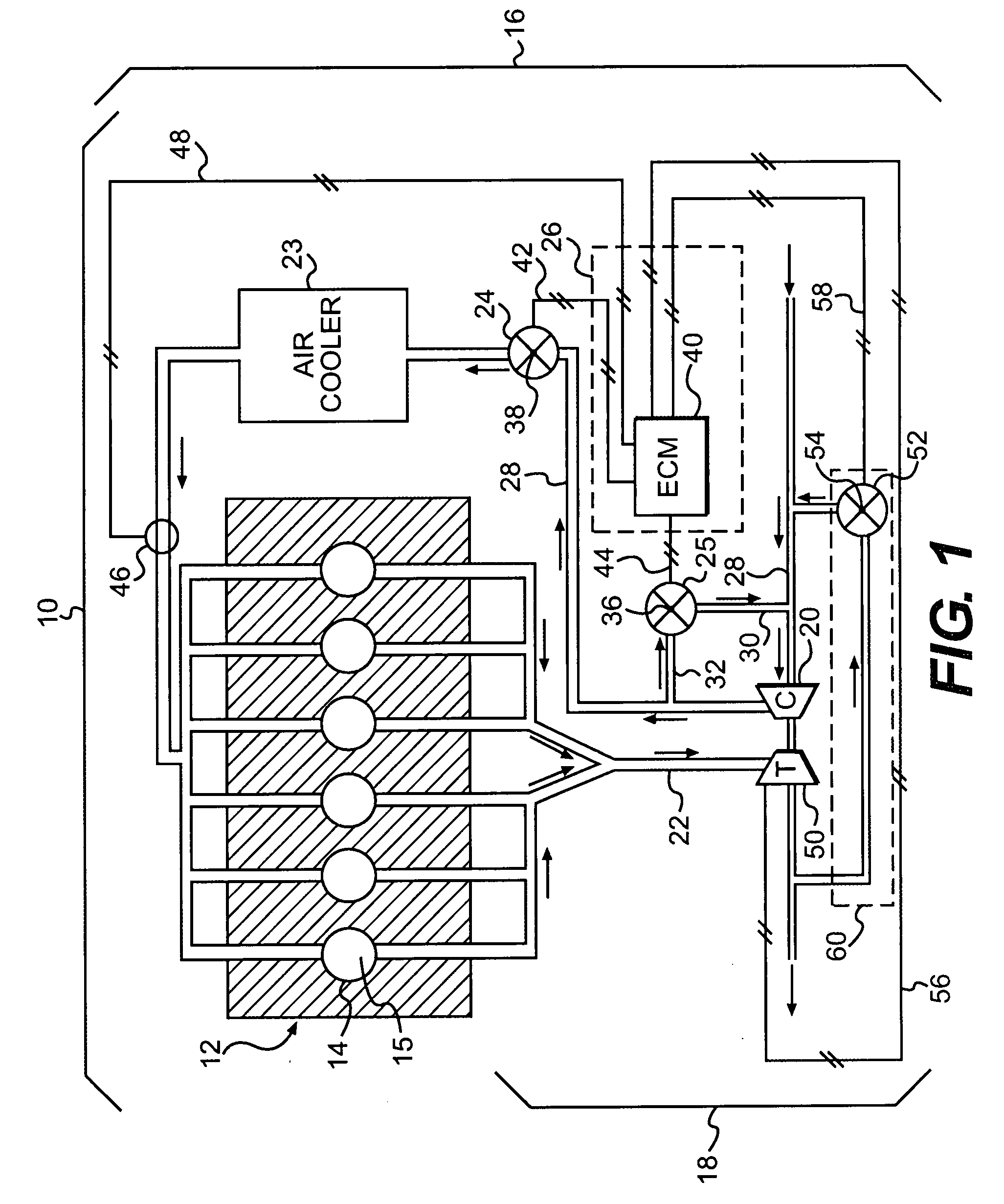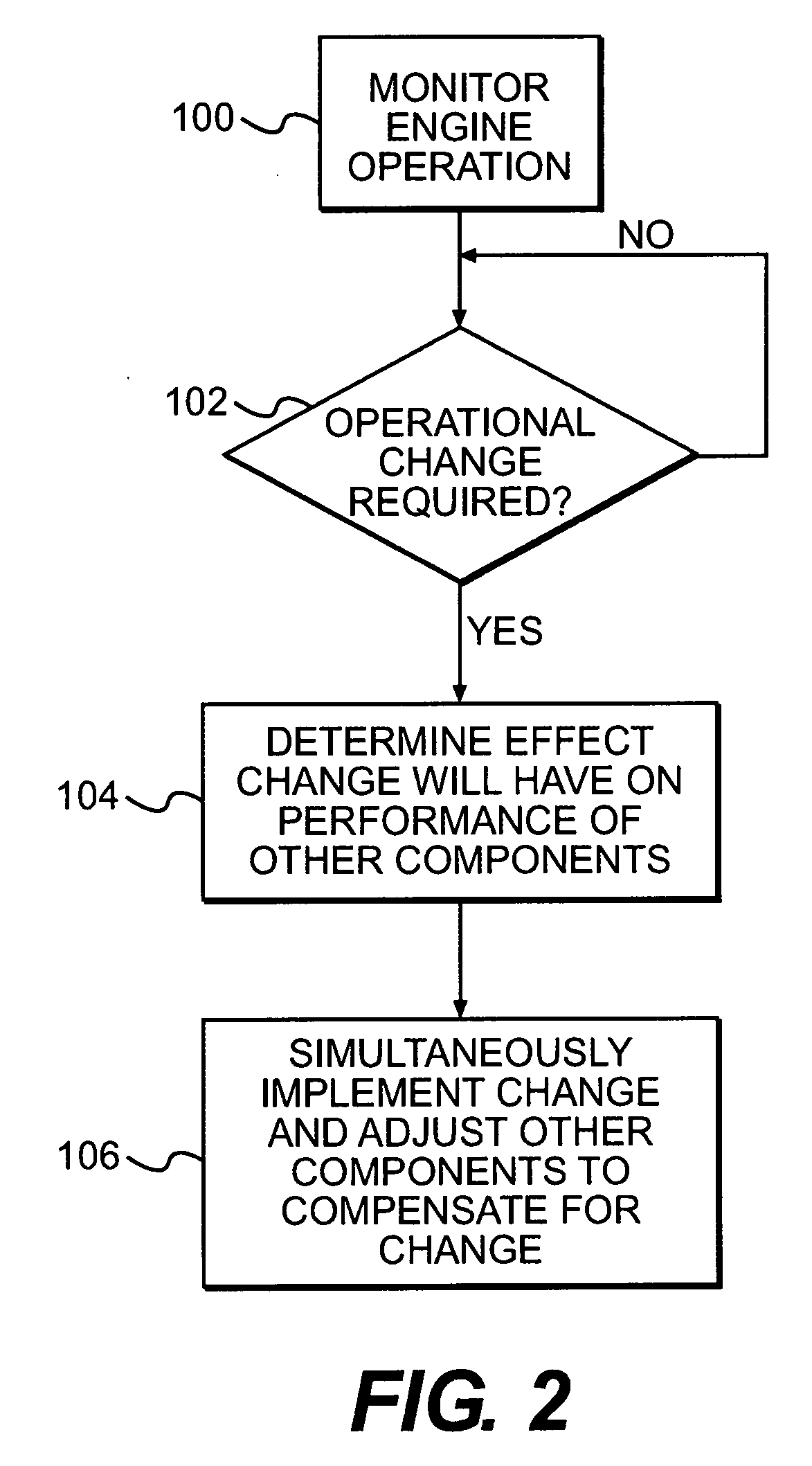Decoupling control strategy for interrelated air system components
- Summary
- Abstract
- Description
- Claims
- Application Information
AI Technical Summary
Benefits of technology
Problems solved by technology
Method used
Image
Examples
Embodiment Construction
[0013]FIG. 1 illustrates an exemplary disclosed engine 10 having multiple components that cooperate to produce a power output. In particular, engine 10 may include an engine block 12 that defines a plurality of cylinders 14, a piston (not shown) slidably disposed within each cylinder 14, and a cylinder head (not shown) associated with each cylinder 14. The piston, cylinder head, and cylinder 14 may form a combustion chamber 15. In the illustrated embodiment, engine 10 includes six combustion chambers 15. However, it is contemplated that engine 10 may include a greater or lesser number of combustion chambers 15 and that the combustion chambers 15 may be disposed in an “in-line” configuration, a “V” configuration, or any other suitable configuration. For the purposes of this disclosure, engine 10 is depicted and described as a four-stroke gasoline engine. One skilled in the art will recognize, however, that engine 10 may embody any other type of internal combustion engine such as, for...
PUM
 Login to view more
Login to view more Abstract
Description
Claims
Application Information
 Login to view more
Login to view more - R&D Engineer
- R&D Manager
- IP Professional
- Industry Leading Data Capabilities
- Powerful AI technology
- Patent DNA Extraction
Browse by: Latest US Patents, China's latest patents, Technical Efficacy Thesaurus, Application Domain, Technology Topic.
© 2024 PatSnap. All rights reserved.Legal|Privacy policy|Modern Slavery Act Transparency Statement|Sitemap



